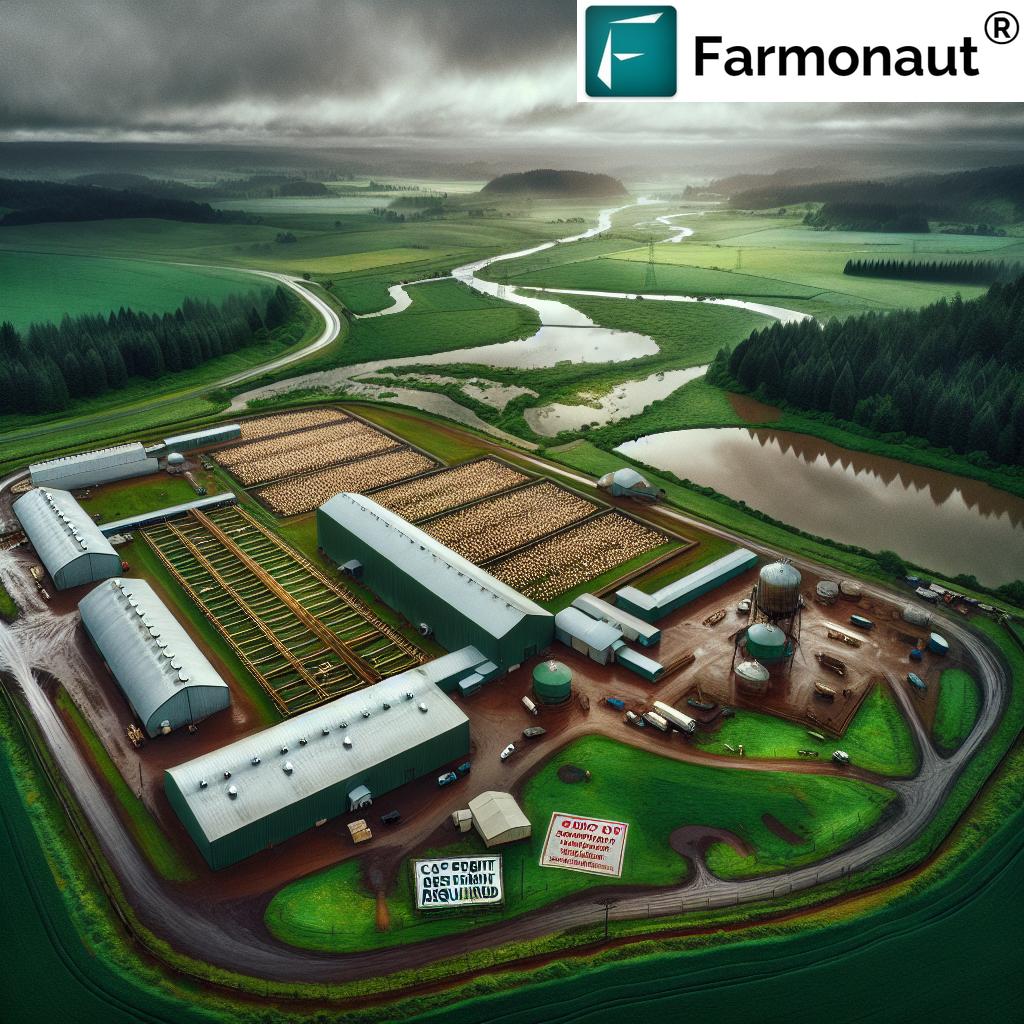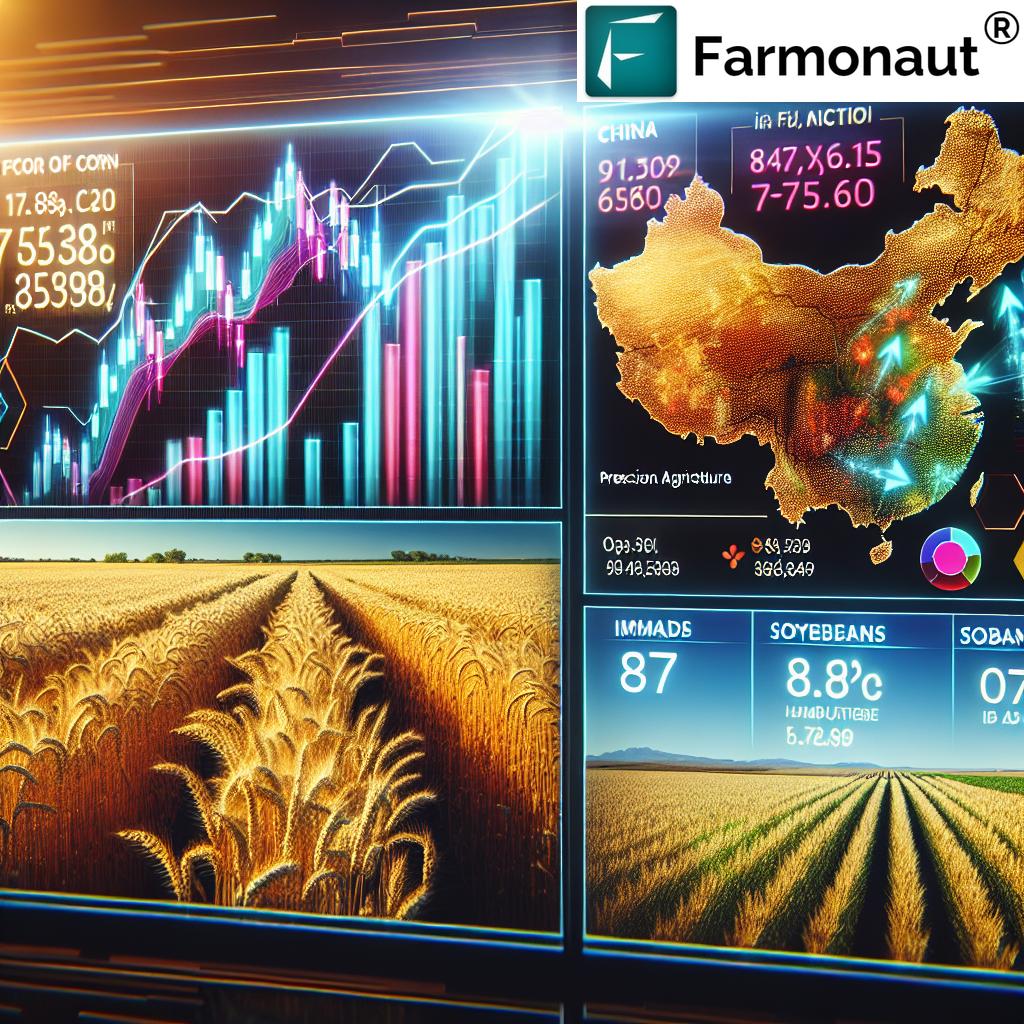- Introduction: The Intersection of American Forest Management & Pest Jobs in 2025
- Overview of American Forest Management: Foundations for the Future
- The Role of Best Pest Management in American Forests
- Agricultural Pest Management: Critical to Food Security & Sustainability
- Innovative Technologies & Strategies Shaping 2025
- Comparison Table: Emerging Forest & Pest Management Jobs in 2025
- American Forests Jobs, Economic Opportunities & Impact
- Farmonaut: Satellite-Based Innovation for Next-Gen Land Management
- FAQs: American Forest Management & Best Pest Management (2025)
- Conclusion: Shaping Sustainable Job Opportunities & Resilient Landscapes
American Forest Management: Best Pest & Agricultural Jobs 2025
Meta Description: American forest management and best pest management are transforming in 2025—driving sustainability, job opportunities, and food security with innovative strategies.
As we enter 2025, the intersection of American forest management and agricultural pest management has become increasingly vital for protecting our nation’s natural resources and ensuring food security. Expanding concerns about climate change, invasive species, ecological challenges, and rural economic resilience are driving a new wave of innovative strategies for sustainable management, effective pest control, and future-focused employment.
In this comprehensive guide, we explore how American forest management and best pest management are shaping new opportunities in agriculture, forestry, and conservation. We’ll dive deep into cutting-edge technologies, emerging jobs, and the essential skills required for professionals in these sectors—all with an eye on sustainability and community resilience for 2025 and beyond.
Overview of American Forest Management: Foundations for the Future
American forests cover nearly one-third of the United States’ land area, acting as critical ecological buffers, carbon sinks, and economic lifelines for rural communities. The effective management of these resources is essential for maintaining biodiversity, preventing wildfires, and promoting the sustainable harvesting of timber and other forest products.
Over recent years, both the U.S. Forest Service and private landowners have intensified efforts to integrate scientific advancements and technology-driven monitoring into forest management practices. The result? Improved forest health outcomes and more resilient ecosystems capable of withstanding the threats posed by invasive species and disease.
Today, sustainable forest management emphasizes:
- Protection of native species and restoration of degraded landscapes
- Controlled thinning and prescribed burns to reduce fire risks
- Maintaining forest integrity through ongoing monitoring and adaptive strategies
- Sustainable timber harvesting and non-timber resources utilization
These actions help to protect American forests against the ever-present threats posed by pests, climate change, and increasing human encroachment.
Key Strategies in American Forest Management (2025)
- Integrating IPM (Integrated Pest Management): Combining biological, chemical, and silvicultural techniques for holistic forest health.
- Enhancing carbon sequestration: Strategic management of forests as carbon sinks to fight climate change.
- Increasing focus on restoration: Rehabilitating degraded areas to revive biodiversity and soil health.
- Promoting ecosystem services: Ensuring forests serve as clean air/water providers and wildlife buffers.
The Role of Best Pest Management in American Forests
Pests have increasingly posed devastating threats to American forests over the past decade. Prominent invasive species such as the emerald ash borer, mountain pine beetle, and gypsy moth have led to extensive tree mortality, jeopardizing ecological integrity and economic productivity.
Integrated Pest Management (IPM) has become the cornerstone for forest pest control in 2025. This approach employs a blend of:
- Biological control: Introducing or enhancing natural predators of destructive pests.
- Chemical treatments: Targeted, minimal use of environmentally safe agents—only when absolutely required.
- Silvicultural techniques: Adjusting forest structure and composition to reduce pest habitats and risks.
- Scientific monitoring: Using remote sensing and early-detection systems for rapid response.
These integrated strategies are crucial for minimizing environmental damage, supporting ecosystems, and achieving durable resilience in managed landscapes.
Case Study: Primary Threats and IPM Response in 2025
Major pests and threats currently impacting American forests:
- Emerald ash borer: Leading to mass ash tree mortality; rapid monitoring and biological controls in progress.
- Mountain pine beetle: Threatens wide swaths of pine forests—remote sensing now enables earlier outbreaks detection.
- Gypsy moth: Periodic outbreaks still pose severe defoliation challenges, requiring adaptive chemical and biological solutions.
Leveraging a suite of tools and technologies, managers are building a more agile and effective early-warning system for pest outbreaks, enabling precise intervention and greater forest health.
Agricultural Pest Management: Critical to Food Security & Sustainability
Agricultural pest management is at the heart of food productivity and security in America. Pest outbreaks represent a direct threat to crop yields, health, and quality—potentially impacting the nation’s overall food security and economic stability.
In 2025, American farmers are increasingly embracing IPM to optimize pest control, safeguard ecosystems, and comply with strict environmental standards.
Core Components of Modern Agricultural IPM:
- Pest-resistant crop varieties: Using genetics and selective breeding for robust, resilient crops
- Crop rotation: Interrupting pest life cycles and reducing need for chemical control
- Encouraging natural predators: Enhancing beneficial insects and native species for biological pest control
- Selective, minimized chemical use: Precision spraying only when needed, minimizing off-target impacts
- Digital and data-driven monitoring: Remote sensing, farm sensors, and AI powered insights (explore Farmonaut’s Large Scale Farm Management App for real-time crop & pest monitoring)
These contemporary practices help maintain a balance between maximizing crop productivity and safeguarding the surrounding environment. American forests bordering agricultural landscapes further amplify the need for coordinated management to prevent pest spillover, ensure ecosystem health, and protect native biodiversity.
Innovative Technologies & Strategies Shaping 2025
Technology is rapidly transforming American forest management and best pest management, creating new opportunities for skilled jobs and sustainable land stewardship. From satellite-based remote sensing and drones to AI advisory and blockchain traceability, scientific advancements are optimizing every step of the monitoring, decision-making, and response process.
- Remote Sensing & Satellite Imagery: Real-time, large-scale landscape monitoring for early pest detection and forest health analysis (e.g., Farmonaut for Carbon Footprinting & Environmental Impact Monitoring)
- Drones & Automated Surveillance: Precision mapping of outbreaks and deployment of biological/chemical treatments exactly where needed.
- AI & Machine Learning: Advanced pest management models for forecasting, risk assessment, and strategic intervention.
- Blockchain Traceability: Ensures transparency and security for agricultural and forestry supply chains (see Farmonaut’s Blockchain Traceability Solutions).
These advancements are also fueling a new demand for skilled professionals who can operate, interpret, and leverage these technologies in the field.
Examples of Tech Advancements Empowering Forest & Pest Managers
- Satellite & Drone Tree Counting: Instant mapping of tree cover for more targeted forest health interventions.
- Automated Disease & Pest Detection: Real-time alerts minimize response times and maximize effectiveness (like Farmonaut’s AI-powered Jeevn Advisory System).
- Scalable Fleet Management: Tools for optimal resource allocation, saving time and fuel across vast landscapes (try Farmonaut’s Fleet Management Platform for managing agriculture/forestry assets).
Comparison Table: Emerging Forest & Pest Management Jobs in 2025
The dynamic landscape of American forests jobs and pest management careers in 2025 is marked by innovation, demand for sustainability, and attractive opportunities for those seeking to make an environmental difference.
| Job Title | Estimated Number of Openings (2025) | Required Skills or Certifications | Sustainable Impact Level | Average Annual Salary (USD) |
|---|---|---|---|---|
| Forest Ecologist | 5,500 | Ecology, GIS/satellite analysis, field research, restoration | High | $72,000 |
| Integrated Pest Management Specialist | 7,800 | Entomology, IPM, pesticide safety, outreach/education | High | $67,000 |
| Remote Sensing Technician | 4,000 | Remote sensing, drone operation, data analysis, GIS | Medium | $62,500 |
| Sustainable Timber Manager | 3,200 | Forestry, supply chain, best practices, sustainability | High | $79,000 |
| Conservation Data Analyst | 2,400 | Data science, conservation planning, monitoring | High | $74,000 |
| Environmental Consultant (Forests & Agriculture) | 8,600 | Environmental law, land management, compliance | Medium | $85,000 |
American Forests Jobs, Economic Opportunities & Impact
The evolving challenges in forest and agricultural pest management are directly fueling job opportunities across the country. Professionals who upskill into next-generation land stewardship have their pick from a suite of rewarding, future-proof roles.
- Entry-level to advanced careers: Field technicians, research assistants, educators, and AI/data analysts are all in demand
- Community-based forestry programs: These programs foster rural employment and local stewardship, enabling direct economic benefits for communities.
- Government & private sector investment: Substantial funding for workforce training programs keeps skills sharp and professionals current with the latest advancements.
- Green jobs alignment: Federal and state priorities tie into carbon foot printing, climate resilience initiatives, and ecological restoration, expanding the impact of sector jobs.
- Finance & insurance links: Professionals in agricultural risk management collaborate on satellite-based crop loan and insurance verification to reduce fraud & ensure financial access for growers.
The continued emphasis on sustainability and ecological integrity means that forest and pest management jobs now directly contribute to America’s climate goals, food security, and rural prosperity.
Key Skillsets & Professional Pathways
- Remote Sensing & Analytics: Growing demand for technicians and analysts to process geospatial and satellite data (see Farmonaut’s API: Farmonaut Satellite API and Developer Docs)
- On-the-ground Management: Enthusiastic adoption of best practices for IPM, habitat restoration, and forest service project management.
- Sustainable Certification: Certifications in sustainable timber, pest control, and ecological restoration bolster career advancement and professional credibility.
How Individuals, Businesses & Governments Can Prepare
- Upskill on Data & Remote Sensing: Master the use of GIS, satellite imagery, and AI-powered platforms.
- Engage in Continuous Learning: Participate in training programs and workshops on biological control and ecological restoration.
- Prioritize Diversity & Inclusion: Encourage a diverse new generation of forest and agricultural professionals, fostering innovation and resilience.
Farmonaut: Satellite-Based Innovation for Next-Gen Land Management
At Farmonaut, we recognize that transformative solutions for American forest management and best pest management must harness the power of technology, data, and accessibility. Our mission is to make satellite-driven insights both affordable and impactful for land stewardship and resource management.
- Satellite-Based Monitoring: We offer real-time satellite monitoring for forestry and agriculture, supporting vital decisions on pest detection, crop health, and environmental risks.
- Jeevn AI Advisory System: Our AI-driven system helps users receive up-to-date, tailored recommendations to optimize yields while reducing input and minimizing chemical use.
- Blockchain Traceability: We empower businesses to ensure transparency and reliability across all steps of land stewardship and supply chains.
- Environmental Impact Monitoring: We help organizations and individuals track and verify their carbon footprint for better compliance and reputation.
- Fleet Management: Our tools allow agricultural and forestry companies to optimize vehicle and equipment usage across challenging terrains.
Whether you are a small farmer seeking to monitor and improve your crop health, or a large-scale conservation group looking to demonstrate impact on climate resilience, Farmonaut’s solutions can help empower every type of user for 2025 and beyond.
Subscribe to Farmonaut for flexible, scalable monitoring:
Try our web or mobile apps today:
FAQs: American Forest Management & Best Pest Management (2025)
What is integrated pest management (IPM), and why is it critical in American forests?
IPM is a holistic approach to pest control combining biological, chemical, and silvicultural techniques along with rigorous monitoring and prevention. It minimizes environmental harm, helps preserve native species, and is the backbone of sustainable American forest management in 2025.
What are the most in-demand jobs in forest and pest management in 2025?
Roles like Forest Ecologist, Integrated Pest Management Specialist, Remote Sensing Technician, and Conservation Data Analyst are most sought after, all requiring technical, scientific, and environmental expertise.
How has technology transformed pest management in forestry and agriculture?
Advancements such as AI, satellite remote sensing, drones, and blockchain traceability have revolutionized outbreak detection, monitoring, and the precision application of pest control solutions, boosting sustainability and reducing the reliance on chemical treatments.
How do American forests bolster economic resilience and job opportunities?
American forests supply valuable resources and ecosystem services, sustaining jobs in rural areas. Effective management, restoration, and pest control not only protect biodiversity but also offer attractive career paths and boost regional economies.
Where can I access advanced satellite-based solutions for forest or pest management?
Explore Farmonaut’s web and mobile platforms, providing powerful, affordable access to satellite insights, AI-powered advisory, and transparent supply chain solutions.
How does carbon tracking and blockchain traceability support sustainability?
Carbon tracking (e.g., via Farmonaut’s carbon footprinting tools) and blockchain (traceability) ensure that forestry and agriculture are accountable and transparent, fostering trust and helping meet tough climate and biodiversity targets.
Conclusion: Shaping Sustainable Job Opportunities & Resilient Landscapes
As 2025 unfolds, the intersection of American forest management and agricultural pest management stands as a beacon of sustainability, opportunities, and innovation. Through integrated strategies, state-of-the-art technology, and a skilled, growing workforce, the nation is rising to meet the critical challenges of climate change, invasive species, and economic resilience.
The sector’s commitment to environmental stewardship and technological advancements promises not only vibrant forests and productive crops, but also thousands of sustainable, rewarding jobs for current and future generations. For those eager to make a difference—whether as forest managers, pest control specialists, remote sensing analysts, or policy makers—the landscape of 2025 is rich with possibility.
Explore the future of land management and sustainability with advanced solutions and real-time insights—start your journey with Farmonaut today.













